What are the most famous Italian recipes? Which dishes and products are worthy of describing and representing our country in the world? It’s not easy to give a clear and unequivocal answer to these questions.
In fact Italy is a receptacle of a lot of extraordinary culinary traditions. Every region, or perhaps even every province, has typical and peculiar recipes. In Italy food is culture, and it symbolizes the very identity of each territory.

The most famous Italian recipes by region

Image by Moira Nazzari via Pixabay
Our journey to discover the most famous recipes in Italy will be linked to regional traditions. We are going to start from the gastronomic customs of Northern Italy, passing through the typical products of Central Italy to conclude with the most renowned flavors of the South and the Islands.
During our itinerary we’ll explore the cultural curiosities and the specific characteristics of the products of each territory.
As the great French gastronome Brillat-Savarin, who lived between the eighteenth and nineteenth centuries, said: "Tell me what you eat and I’ll tell you who you are". Nothing could be more true. So let’s set out to discover the regions of our Country through the story of their main culinary traditions.
20. Aosta Valley: a journey from North to South among the most famous Italian recipes
In the wild and magnificent alpine landscape that characterizes the Aosta Valley, cheeses are probably the most valuable regional product, in particular the extraordinary Fontina Valdostana DOP, which is used to prepare the Fonduta Valdostana and the Cotoletta alla Valdostana.
We don’t know exactly where the Fondue recipe originated. A legend associated it with a Swiss monk of the 13th century: since in his monastery, during Lent, the consumption of cheese was forbidden, to circumvent this rule he decided to heat the cheese and make it liquid, so as to turn it into a soup, which was allowed.
The Fonduta Valdostana, one of Italy's most characteristic and delicious winter dishes, is slightly different from the Swiss Fondue: on one side because Fontina Valdostana is used, on the other because there’s a different procedure by which cheese is left to rest in milk.
And Fontina is also the peculiar element of Cotoletta alla Valdostana, which thanks to the mix of cheese and cooked ham becomes a tasty recipe with typical mountain flavors.
19. Piedmont
Gran Bollito Misto is a typical dish of Piedmont and one of the most famous Italian recipes. It dates back to the late fifteenth century, but it was at the end of the 19th century that it became a must on the Royal tables, brought to the attention of the chronicle by characters such as Cavour and Vittorio Emanuele II.
The traditional recipe includes 7 tougher cuts of beef and veal and 7 bagnetti (sauces). Today, however, it is "limited" to five cuts of meat and three sauces: green, red, al cren. According to tradition and for its history linked to convivial banquets, Bollito Misto should be served for no less than 12 people!
The sauces of Bollito, or Bagnet, are another of the classic recipes that cannot be missed in Piedmont restaurants: Bagnetto Verde (green sauce), in particular, is a very tasty recipe that is traditionally used to accompany meat and fish dishes.
Among the most famous recipes of Piedmont we cannot fail to mention Bagna Cauda, that literally means hot sauce, prepared with Extra Virgin Olive Oil (once produced locally in Lower Piedmont), garlic and anchovies; Vitello Tonnato, a cold second dish that is as simple as delicious; and Agnolotti del Plin, a traditional pasta from the Langhe and Monferrato areas that is characterized by a filling in which the roast meat is used. Plin means pinch, and indicates the typical way to close the raviolo around its filling.
Join a tour in Turin featuring Piedmontese sweets and wines18. Liguria
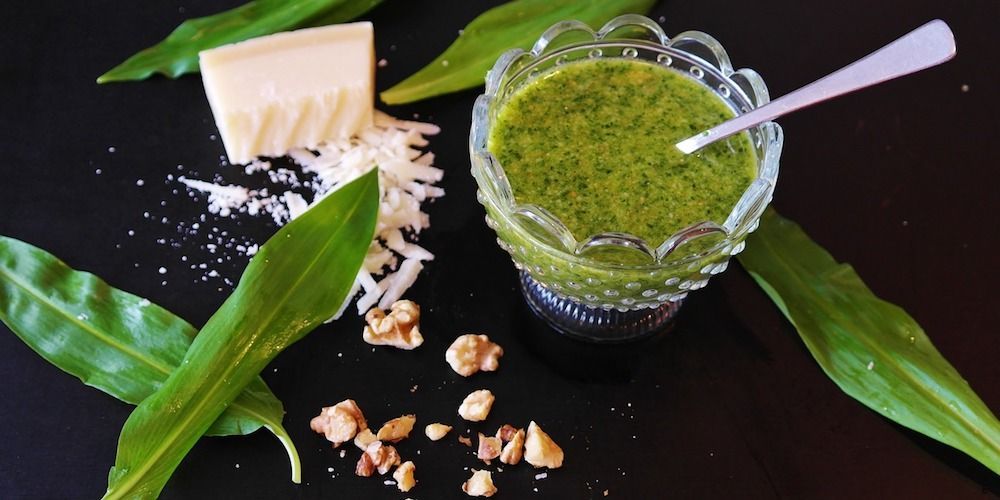
Trofie are a type of traditional pasta of Liguria, in particular of the area between Camogli, Recco, Avegno and Sori, which according to tradition dates back to the period of the Crusades. Once prepared by hand by Ligurian women, Trofie have historically an irregular shape, because the newly home-made pasta was at first curled over a kind of wooden knitting iron, and then pressed with the palm of the hand.
The second essential product is obviously Pesto, a sauce that is obtained by crushing raw basil, pine nuts and garlic and that is one of the most famous Italian recipes in the world.
The Trofie al Pesto are in fact one of the Ligurian dishes to try absolutely when we visit this region.
Another famous Ligurian recipe is focaccia. Ligurian Focaccia is a very famous product in Italy, but not so common abroad. It’s different from the traditional focaccia because it’s greasier and tastier, since there’s oil or lard in the dough. It’s a recipe of very ancient origin: it dates back to the Middle Ages, when it was even served in church during weddings and funerals (it was then banned for the too much noise that the faithful made while they ate!).
Visit the Aquarium and try the street food in Genoa17. Lombardy
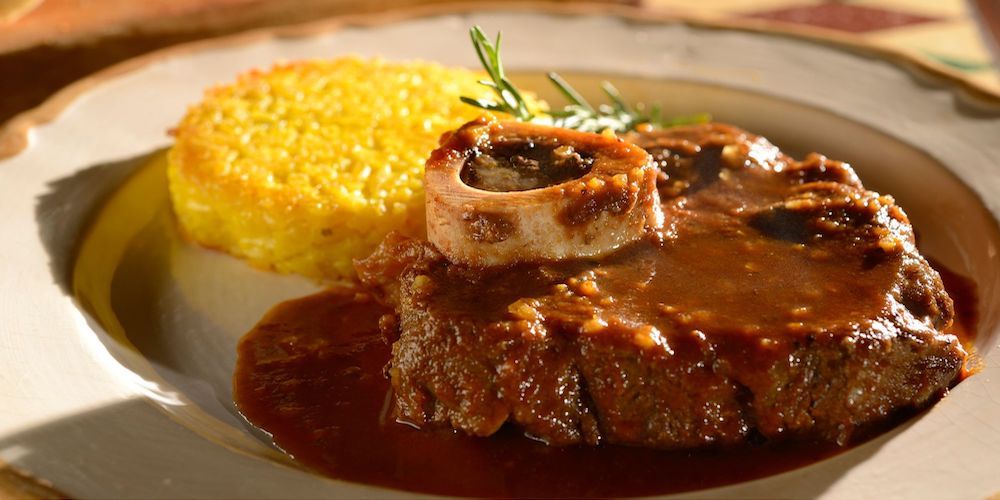
Bergamo and Brescia, in Lombardy, are united as Italian Capitals of Culture 2023, but historically they’re also rival cities, and that is true also as regard cuisine. Casoncelli are in fact a famous egg pasta typical of both cities.
While the Bergamo recipe includes a thicker dough, a filling rich in veal and cheese, and a seasoning with butter, Grana Padano, sage and bacon, Casoncelli Bresciani have a more delicate filling (breadcrumbs, butter and Grana Padano) highlighted by a thinner paste and a topping without the use of bacon.
Among the valleys of Bergamo and Valtellina we can find another recipe that we can count among the most famous in Lombardy: Polenta Taragna, which prepared with a mix of corn flour and buckwheat flour, butter and cheese.
We stay in Valtellina for another traditional and tasty dish, Pizzoccheri. It is a pasta similar to tagliatelle, prepared with buckwheat flour (a representative product of this territory, in particular the town of Teglio) and seasoned with pieces of potatoes, savoy cabbage, cheese, garlic and pestèda, an aromatic seasoning used in the province of Sondrio.
Let us now move to the Lombard plain and to the big city. Milan is considered the world capital of fashion, but also in gastronomic terms it offers some recipes of great tradition, including Risotto alla Milanese, Ossobuco (òss bus, in local dialect) and Cotoletta alla Milanese.
The first, also called risotto giallo (yellow risotto) because of the color given by the use of saffron, appears to date back to the 16th century: looks like it was created by a painter who wanted to "tint" the dish to impress his guests.
Ossobuco is a real icon of Milan. It’s a particularly tender cut of veal. It is served as a single dish or combined with saffron risotto, thus creating a recipe that combines the two culinary symbols of the city.
Discover Milanese food and culture with the Milano City Card16. Trentino-Alto Adige

Image by klinik via Pixabay
In the chapel of the picturesque Hoccheppan Castle, not far from Bolzano, we can admire some extraordinary Romanesque frescoes of the 13th century. One of them depicts the “mangiatrice di canederli” (canederli/dumpling eater).
Apart from its undoubted artistic beauty, this work makes us understand the great tradition of a recipe that, originally born in Bavaria, Germany, has become the undisputed emblem of Trentino gastronomy.
Canederli are large dumplings, prepared with a mixture of old bread and seasoned in different ways according to the distinct areas of the region (the vegan version is very interesting). Compared to Tyrolean dumplings, those of Trentino include the addition of smoked luganega.
Strangolapreti is another very famous recipe of Trentino, not to be confused with the Strozzapreti, which are instead typical of Emilia-Romagna. It is a kind of gnocchi with a dough made with bread, eggs, spinach and grana, then topped with melted butter and sage.
Where did the name “strangolapreti" come from? It is said that in the '700 a priest appreciated this dish so much that he continued to eat it continuously. Until, in fact, he practically choked, and was saved by a hostess who hit him with a punch so strong that he immediately spit out the bite!
15. Veneto
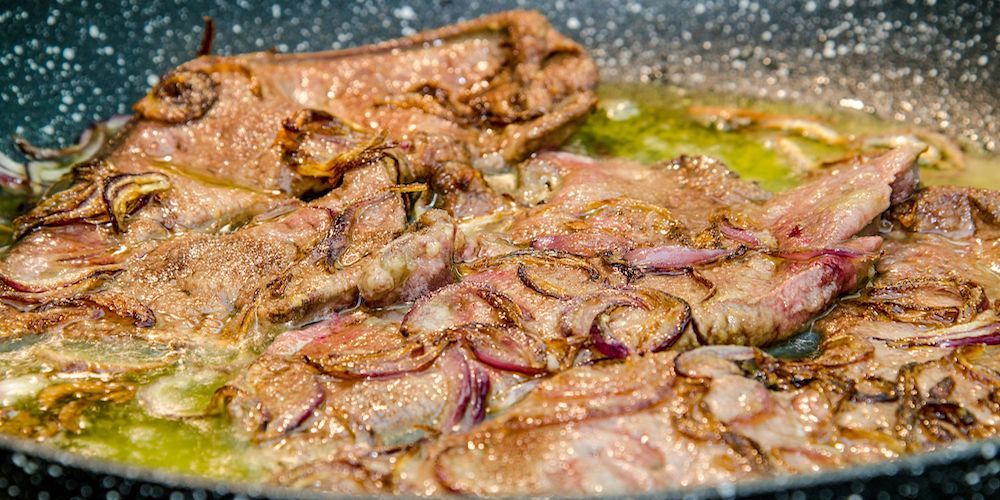
Stockfish, that is dried cod, is one of the fundamental ingredients for the recipe of Baccalà alla Vicentina. Cod is a product from Northern-European extraction: why, then, is it part of the Venetian tradition since the 15th century?
Apparently it was the navigator Pietro Querini, while he was in Norway in the Lofoten Islands, who saw stockfish hanging to dry. Once "transferred" the recipe back home, it became commonly used to circumvent the religious ban on eating meat on Fridays, without being forced to buy fresh fish, which was too expensive.
Among the most famous recipes of Veneto, there is one that is even older, dating back to Roman times. Fegato alla Veneziana is a dish made with pork or veal liver and the white onion of Chioggia, which serves to give sweetness to dampen the strong taste of the liver. This creates a combination of typical regional flavors, to be enjoyed with a side of white polenta.
Let’s remain in the beautiful Venice to mention the recipe of Risi e Bisi, a traditional soup of rice and peas typical of spring (the season when we can find fresh peas), which usually was offered to to the Doges during the Feast of Saint Mark, the Patron Saint of the city.
We conclude our gastronomic tour of the Serenissima with the Sarde in Saor, fried sardines seasoned with vinegar, onions, raisins and pine nuts. This is another recipe that has its roots in the history of Venice, being born in the 14th century as a poor dish that Venetian sailors exploited during long sea voyages (because the use of vinegar and onions preserved fish longer).
Over the centuries this preparation has become more and more elaborate, so that Sarde in Saor have also landed on the tables of the wealthiest classes, and today they are one of the most famous recipes of Northern Italy.
Explore Venice with the Venice Pass14. Friuli-Venezia Giulia

The typical products of Friuli-Venezia Giulia are grappa, San Daniele ham and cheeses, among which Montasio stands out. The latter is the main ingredient of Frico, one of the most famous regional recipe. Frico is prepared soft or crunchy: in the first case, using butter and potatoes, it basically becomes a kind of omelette. If we only use Montasio, we will be able to taste its crumbly variant.
Another traditional element of Friuli is Muset, a sausage similar to cotechino. Brovada and Muset is a Christmas recipe that combines pork with the classic white turnips of the region.
Among the typical first courses, in Friuli-Venezia Giulia we find Blecs, a type of thin pasta prepared with wheat, corn and buckwheat, very similar to maltagliati.
And among the desserts? We absolutely cannot fail to mention Tiramisu, a real Italian institution famous all over the world.
Tiramisu is a dessert made with coffee, biscuits and mascarpone cream, and its origin is the subject of great debate: is it an original recipe from Friuli or from Veneto?
In 2017, the Ministry of Agriculture, Food and Forestry ruled that Tiramisu originated in Friuli-Venezia Giulia, where the dessert was born in two different versions, in the form of a slice in the province of Udine and as a semifreddo cup in the province of Gorizia.
Other sources, however, suggest that Treviso, in Veneto, is the birthplace of Tiramisù. It seems that in the 19th century, the madam of a local brothel created this dessert to "revitalize" her clients!
Regardless of its true origin, this Italian delight is a source of great national pride, replicated and appreciated everywhere in Italy and abroad.
Take part to a tiramisu, gelato & espresso tour in Rome13. Emilia-Romagna
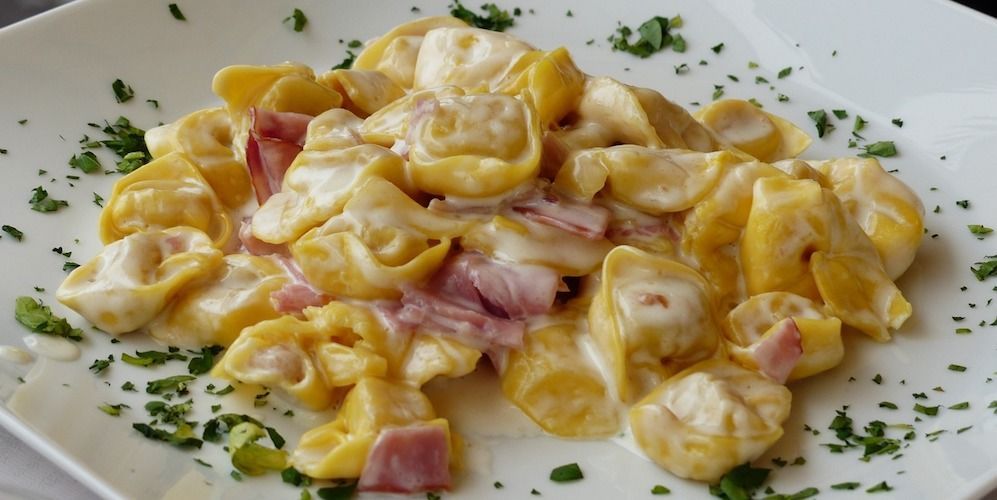
Image by Hans via Pixabay
In Emilia-Romagna we can find some of the most famous Italian recipes. Traveling within the region from the Northwest to the Southeast, we can find a series of tasty products and dishes, from Gnocco Fritto, passing to Tortellini and Lasagne alla Bolognese, until the Romagna Riviera with the classic flavors of its Piadine.
Gnocco Fritto dates back to the fall of the Western Roman Empire, probably brought to these areas by the arrival of the Germanic populations. In the cuisine of the Longobards, lard (which is the main ingredient of Gnocco Fritto) was obtained from the fatty tissue of pigs. In this way a tastier bread was obtained, which is the peculiar characteristic of this recipe even today, when it is seasoned with the outstanding salami of the region, such as Culatello, Prosciutto di Parma, Salame Piacentino and so on.
If Gnocco Fritto can be an extraordinary appetizer, Emilia is also home to some of the most famous pasta dishes in Italy, for example Tortellini.
Tortellini is a round egg pasta roll with a variable filling (raw ham, mortadella, pork, and much more).
It is a recipe that has an origin cloaked in legend: it seems to have been born at the Corona inn, in Castelfranco Emilia, when the owner peered through the keyhole of a room where a noblewoman was staying. That vision inspired him so much that he immediately went down to the kitchen and began to knead, creating a pasta with the shape of navel.
Another tradition claims that one evening Venus, Bacchus and Mars arrived at the Corona inn. The next morning Venus woke up, calling her companions, but finding that they had already left, leaving her alone. Hearing the calls, it was instead the owner who entered the room: he saw Venus and was dazzled by her beauty, which was once again the inspiration to give life to the first Tortellini.
Among other traditional recipes we can mention Lasagne alla Bolognese, with their layers of puff pastry stuffed with béchamel sauce and meat sauce, and seasoned with a sprinkling of tasty Parmigiano Reggiano. It is a dish to eat with the family, and it transmits all the joy and conviviality typical of the Emilian people. It’s recipe that has become a pillar of Italian cuisine, and in fact its regional variations are countless (for example the Lasagne di Carnevale in Naples).
Finally we arrive on the Adriatic Sea, where we have to try the flavors of Piadina alla Romagnola, commonly called Piada. It’s a street food of popular origin that, however, can also become gourmet, depending on how it is filled. The origin is uncertain, perhaps even dating back to the Etruscan period, for a food to be savored avidly over and over again in kiosks, on the beach or while walking at sunset on the seafront.
12. Tuscany
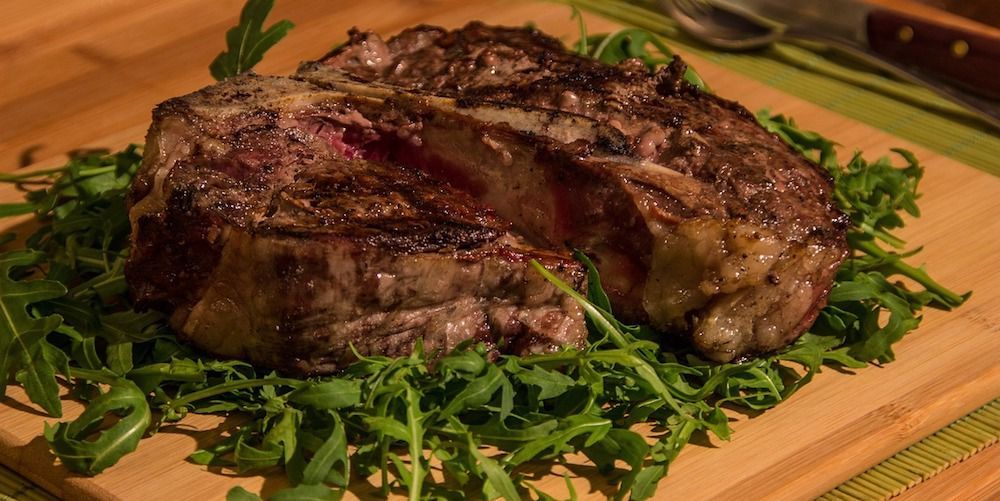
Image by smilingpixell via Pixabay
Tuscany is a fantastic region, from the shores along the Tyrrhenian coast to the enchanted landscapes of the hills and the historic villages. In a territory as varied as spectacular, even the gastronomic component can not be outdone, thanks to its excellent raw materials.
Here we can find recipes known all over the world, such as Bistecca alla Fiorentina, Pappa al Pomodoro, Tagliatelle al Cinghiale and Cacciucco.
The Bistecca alla Fiorentina dates back to Etruscan times, although the name steak is much more recent and comes from English language (beef steak). In fact, during the reign of the Medici or perhaps in the 19th century, several English Knights, who often stayed in the wonderful city of Florence, began to call in this way the fillets of Chianina meat that were tasted in the summer, during the Feast of San Lorenzo on August 10.
This recipe also goes perfectly with typical Tuscan wines, such as Chianti, which are another characteristic product of the region.
Pappa al Pomodoro is another of the culinary symbols of Tuscany. It’s a simple recipe with peasant origin, composed of few ingredients (stale bread without salt, as it is used in Tuscany, and tomato pulp, basil, oil, salt and pepper), but still extremely tasty.
Tagliatelle al ragù di Cinghiale are typical of the Tuscan hinterland, especially the Maremma area. The secret of this recipe lies in the long cooking of the meat, which must be soft and give an intense flavor to the pasta.
Finally, let’s travel to the beautiful Livorno to enjoy the real Cacciucco Livornese. It is a recipe that comes from the coasts of Western Turkey, introduced in Livorno in the 17th century with the only replacement of an ingredient: tomato, which was only recently imported from the Americas, instead of capers. The name is a consequence of the Turkish terminology Küçük Balik, which means small fish, to indicate one of the most famous sea soups in Italy and beyond.
Savor Florence’s street food11. Umbria
A place in which nature and art, culture and landscapes coexist in a complementary way: this is Umbria, a region sometimes neglected from a gastronomic point of view, but that is still able to offer some recipes well known for their outstanding flavors.
One of these recipes is undoubtedly Pasta alla Norcina, a typical dish of the city of Norcia. The term norcino, however, indicates a real profession, that is the specialist of processing and seasoning of meat, in particular the pork, which is typical of these areas. The main ingredients of Pasta alla Norcina are in fact the sausage of Norcia, the fresh ricotta of sheep and, for those who appreciate stronger flavors, a sprinkling of fine black truffle, also characteristic of the region.
In Umbria we can find other important recipes, like Strangozzi. Strangozzi are a kind of fettuccine prepared with a dough without eggs, made with flour 00, flour semolina, oil and water, to be seasoned very simply with tomato sauce and chopped parsley.
Instead, in the historic and beautiful city of Assisi, as well as in Spoleto and other areas of the region, we can taste a particular dessert, the Rocciata. Round in shape and with a thin dough, it is a cake topped with dried fruit, apples and nuts, while a brush of Alchermes liqueur (which however is of Tuscan origin) gives it a distinctive reddish color.
10. Marche
Home to artists, castles and beaches, as well as rich in natural and cultural attractions, Marche region offers traditional and heterogeneous recipes.
One of these, perhaps the most typical of the inland, is Fritto all'Ascolana, declined in the famous dish of Olive all'Ascolana, one of the most famous Italian street food. Basically they are balls fried in batter with a filling of green Ascolan olives in brine stuffed with a mixture of beef and pork of the territory, very tender and tasty.
In this way we can savor a crunchy food, a recipe whose origin dates back to the 19th century, although the filling of olives was in use since 1600 and olive cultivation in this area was even present at the time of Greeks and Phoenicians.
If we move from the inland of the Marche to the shores of the Adriatic Sea, in particular to Ancona, we must necessarily mention another famous regional recipe, named Stoccafisso all'Anconitana.
As we have seen talking about Baccalà Vicentino, Stoccafisso (stockfish) has always been a very suitable product for sailors who had to make long sea travels, and in fact the city of Ancona has nothing to envy to anyone in terms of maritime traditions.
The curiosity of the Anconitana version lies in the fact that there is no real fixed recipe, because traditionally it is a food to match what we can recover from the home garden, which differs depending on the various areas or seasons. We also remember that, speaking of Stoccafisso and Baccalà, we refer in both cases to Cod: what changes is simply the conservation technique.
Discover the typical foods and wines of the Marche region9. Lazio
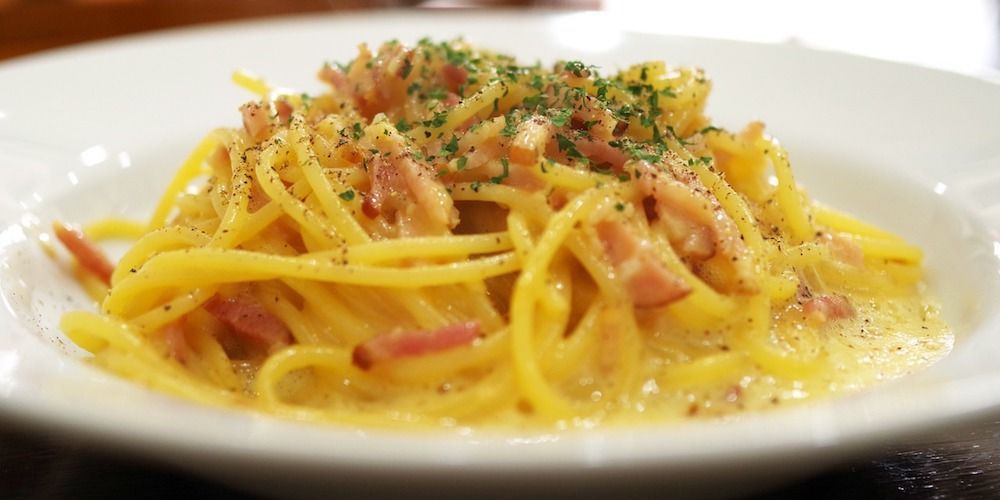
Image by takedahrs via Pixabay
Some of the most famous Italian recipes originate in Lazio, the geographical, historical and cultural heart of Italy. Where should we start? Perhaps from Pasta alla Carbonara, an extraordinary dish known all over the world, absolutely not to be missed if you are in Rome.
In fact, this recipe does not have certain roots, but it is surely quite recent. It is said that it was born during the presence of the Allies in 1944, when the American army stationed in Central Italy had to eat with the few foods available, like eggs and bacon, classic ingredients of an English breakfast. This combination of flavors was also appreciated by the lumberjacks of the Apennines, who worked to obtain coal from wood. For them the ingredients available were eggs and guanciale, and these are also the pillars of the recipe that we know today. That’s why it is called Carbonara.
There is some debate about the seasoning of Pasta alla Carbonara: someone prefers bacon and parmesan instead of guanciale and pecorino, but the truth is that the latters are the correct ingredients of the official dish. Guanciale gives a sweeter taste, while pecorino was produced by the same lumberjacks and was easy to store. The variant with parmesan is however appreciated by those who prefer a less salty seasoning, while the one with bacon from those who want a less fat recipe (bacon is also cheaper).
Another typical regional dish is pasta Cacio e Pepe. It is a product of humble origins, a poor dish that comes from the pastoral tradition, and in fact it is made by dressing pasta with pecorino cheese and pepper, the same ingredients that roman shepherds always carried with them. Cacio e Pepe is also the base of another famous recipe, named Gricia, which simply adds guanciale to pepper and pecorino cheese.
Another dish of the peasant cuisine of Lazio is Gnocchi alla Romana: these kind of gnocchi are large dumplings shaped like discs, prepared with a mixture of semolina, eggs, milk, butter and parmesan (no flour, no potatoes). Baking in the oven makes them crisper and particularly tasty.
Finally, we move to the province of Rieti, in the beautiful Amatrice, to discover one of the most famous sauces in Italy, named Amatriciana. Guanciale sauté shaded with white wine, tomato, pecorino cheese, chili, extra virgin olive oil, salt and pepper: these are the ingredients of a classic sauce, tasty and capable of transmitting the color and warmth of the people of Lazio. Again, it is a recipe born for popular tables, now become a true symbol of Lazio and of our entire Country.
Try a food and wine tasting in Rome8. Abruzzo
Among the most famous Italian street food recipes, Arrosticini Abruzzesi occupy a place of honor. Composed by skewers of ciavarra ( young sheep meat) or castrated mutton, this product was born according to legend in the first half of the 19th century, around the 1930s.
Two shepherds from Abruzzo who lived in the area between L'Aquila and Pescara put pieces of old sheep meat on a wooden stick, trying to cook them on the grill to improve the quality of a meat that was not particularly valuable. The positive result led to trying the same process with higher quality cuts, and in the following century this recipe became not only a regional icon, but a model in whole Italy, particularly appreciated during barbecue in the summer months.
Another typical dish of Abruzzo is Spaghetti alla Chitarra, a name that derives from the instrument used to prepare pasta. It is not a guitar in the musical sense, of course, but a tool used to cut the dough thanks to the presence of a series of metal strings. In this way spaghetti become more wrinkled and square in shape, and can absorb the sauce better. Spaghetti alla Chitarra should be served al dente.
7. Molise
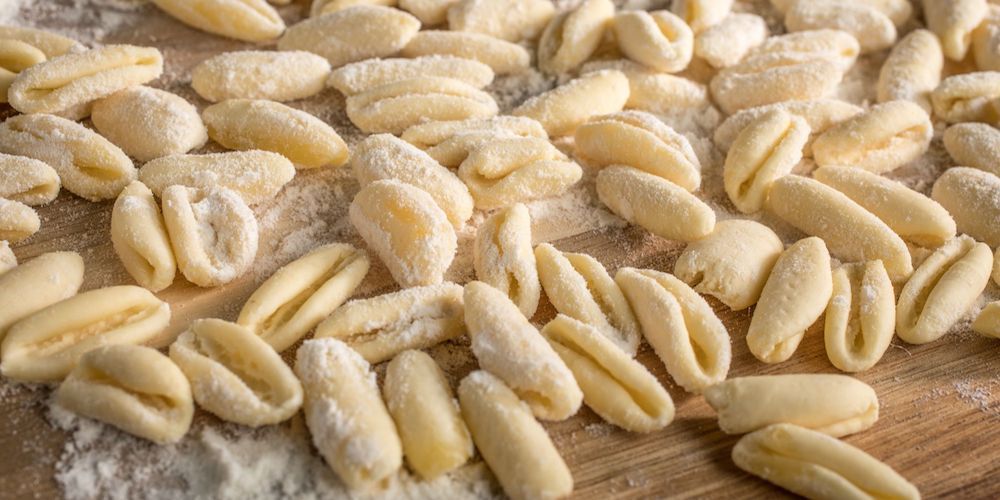
Molise is a region as small as rich in gastronomic flavors, which are strongly linked to the territory.
Cazzutill con la Ventricina, using dialectal terms, represent probably the most famous regional recipe, better known in Italian as Cavatelli con la Ventricina. Cavatelli are a type of pasta born in Molise, perhaps created by a local lady who made a mistake in preparing pasta for tagliatelle. She cut strips too wide, so she tried to remedy by cutting the pasta into small rectangles and, keeping them in contact with the table, rotating and pressing them with three fingers, giving them a shape that has become of traditional use.
Ventricina is a type of pork typical of the region, which is seasoned with salt and red pepper and left to mature for several months.
Instead, in Termoli, on the Molise coast, we can savor the famous recipe of the Zuppa di Pesce (fish soup) alla Termolese, a poor dish born thanks to fishermen who reused the fish left unsold transforming it into a tasty soup.
6. Campania
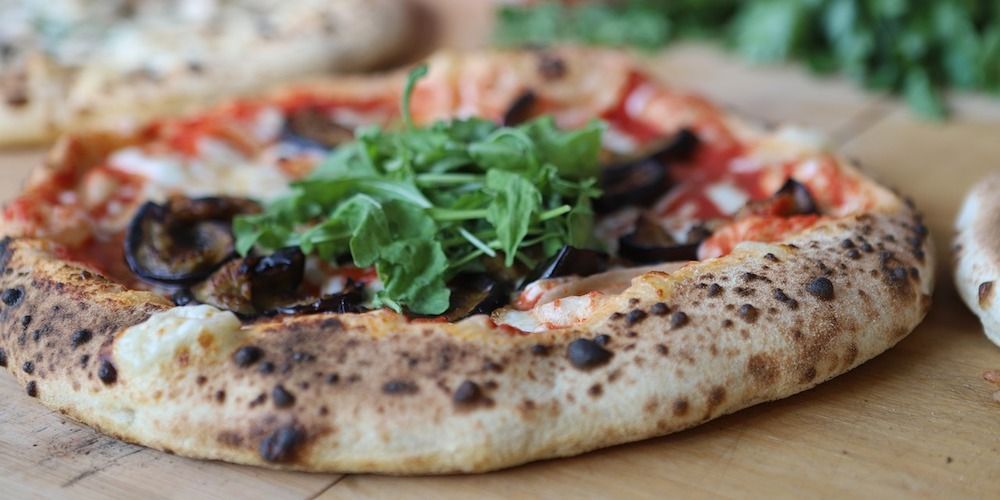
Image by yiftahye via Pixabay
Campania is an extraordinary region, from the wonders of Naples, Sorrento, the Amalfi Coast and the two Gulfs, to the fabulous scenery of Cilento, the wild nature of Irpinia and the artistic beauty of Caserta and Benevento. And much, much more. In this context we also find an unparalleled gastronomic tradition, admired all over the world, which gives life to some of the most famous Italian recipes.
And what kind of food can we name first, if not the traditional Pizza Napoletana, exported and loved all over the world? In fact, if it’s true that already among the Egyptians it was customary to knead using flour, water and honey, it is due to the city of Naples, in the 16th century, the addition of tomato, a product of American import.
Today, Pizza is an icon not only of the city of Naples and Campania, but is the main symbol of Italian gastronomy in the world. Among the typical Neapolitan variations there is also the Pizza Fritta (fried pizza), a recipe developed after World War II.
On one hand, the lack of wood-burning ovens available due to the destruction caused by the conflict; on the other, the cost of the ingredients of the traditional recipe, made sure that women of the poorer classes developed a dough based on flour, oil, water, yeast and salt, which was cooked in hot oil and served as street food. From the classic recipe of Pizza Fritta derives also other variations such as Zeppola, Calzone or Montanara.
Gnocchi alla Sorrentina is another traditional recipe from Campania admired and revived in Italy and abroad. Ingredients are basically the same as Pizza, but they are used to create a new and tasty dish, whose flavors convey all the magic of an afternoon spent in Sorrento, enjoying the scent of the sea and admiring the colors of the Gulf of Naples in the distance.
Are there other typical dishes of the region worth mentioning? Actually there would be an infinity: Spaghetti con colatura di Alici di Cetara, along the Amalfi Coast; Paccheri allo Scoglio with Gragnano pasta, which are a delicious union between the classic pasta of Campania and the simple and delicious flavors of fish; or even the Casatiello of Naples, a typical Easter recipe with four centuries of history behind. And surely, for reasons of space, we have to leave out many other famous and extraordinary dishes.
Finally, a separate chapter on desserts is a must, with Pastiera and Baba among the best known (and appetizing) ever. About Pastiera Napoletana, a legend tells that one day Maria Theresa of Habsburg, sovereign known for her particularly austere character, tasted a slice of this dessert. As she savored it, her face suddenly lit up and her normally severe appearance changed into an expression of happiness, to the point that her husband, Ferdinand II of Bourbon, ordered the cook to prepare Pastiera much more often!
Discover Naples street food with a guided tour5. Apulia
Apulia is a beautiful and diverse region, place of origin of various recipes among the most known and appreciated in Italy.
Orecchiette is a characteristic product of this land, with mysterious roots that are lost in past centuries, perhaps with local origins or, some people says, brought in the 13th century by the Counts of Anjou, who at that time ruled in Puglia.
The name Orecchiette indicates the shape of the pasta, which in fact resembles small ears, and the classic Apulian recipe requires a seasoning with turnip greens or with a red sauce. In any case, it has to be a really tasty sauce, because this type of pasta is able to collect and enhance the seasonings to perfection.
Fave Bianche e Cicorie is another famous traditional recipe from Puglia, brought to these areas by ancient Greeks, which takes advantage of the cultivation of legumes in the area to create an iconic dish, simple, pure and genuine.
If we move along the coast we can enjoy recipes related to seafood products, such as the tasty Cavatelli con le Cozze (mussles) or Ciambotto, a fish soup from Puglia realized by using small fishes.
Finally, how not to mention the famous Bombette, so called because of the explosion of flavors generated by every single bite. It is a roll of pork capocollo of small size, with a filling prepared with cheese, salt and pepper. A food that contains all the flavors and different souls of a region with such ancient traditions.
Visit Bari and discover Apulian street food4. Basilicata
The traditional cuisine of Basilicata is simple but healthy and tasty. In this region where wild and extraordinary nature reigns, the basic ingredient is the simplest one can think of, that is bread. Lucano bread is a product well known throughout Italy, and we can taste it through several typical dishes such as Strazzata or Pane Cotto.
Strazzata is a doughnut-shaped focaccia rich in pepper, which can be filled with the tastiest regional products, such as Caciocavallo or Ricotta, as for cheeses, but also salami or Ciambotta, which is a stew of peppers, eggplant and zucchini.
Pane Cotto is instead a sort of soup seasoned with bread, eggs, vegetables and pepper. The use of stale bread is preferred, in particular Pane di Matera IGP: this type of bread has the shape of a croissant and a processing of ancient origins, which took place in the Sassi Materani and has always been based on the excellence of Lucan wheat.
Another simple but at the same time very appetizing recipe is Rafanata: it is a traditional high omelette made of horseradish, eggs and pecorino cheese, with an additional optional seasoning of sausage, potatoes and bread crumbs. It is cooked on the grill in a uniform way to enhance all the flavors.
Visit the Matera Olive Oil Museum3. Calabria
History, nature, culture and an unparalleled artistic heritage. Calabria offers all this and much more, as well as a fabulous gastronomic tradition.
From spicy and tasty sausages such as 'nduja and soppressata, to vegetable excellences such as Cipolla Rossa (red onion) di Tropea, this region provides sublime quality products that enrich the most famous recipes of the culinary tradition of this territory.
Pasta alla 'Nduja is a real delight for lovers of spicy food, especially if topped with a sprinkling of pecorino. Soppressata is also ideal as a sauce for pasta, although one of the most suitable ways to enjoy this product is simply combining it with fresh bread.
Cipolla di Tropea is used in pasta dishes, but we can find it even in a particularly popular traditional recipe called Licurdia Calabrese. It is a soup in which, together with the onion, we can find bread croutons and cheese, precisely the typical and delicious Caciocavallo silano.
Finally, we must mention the classic Calabrian Lagane, a kind of pasta similar to tagliatelle, but a bit larger. Lagane are combined with chickpeas, boiled with bay leaves and sautéed in a pan with lard, garlic and oil. Thus was born the famous traditional recipe Lagane and Ciciari.
2. Sicilia
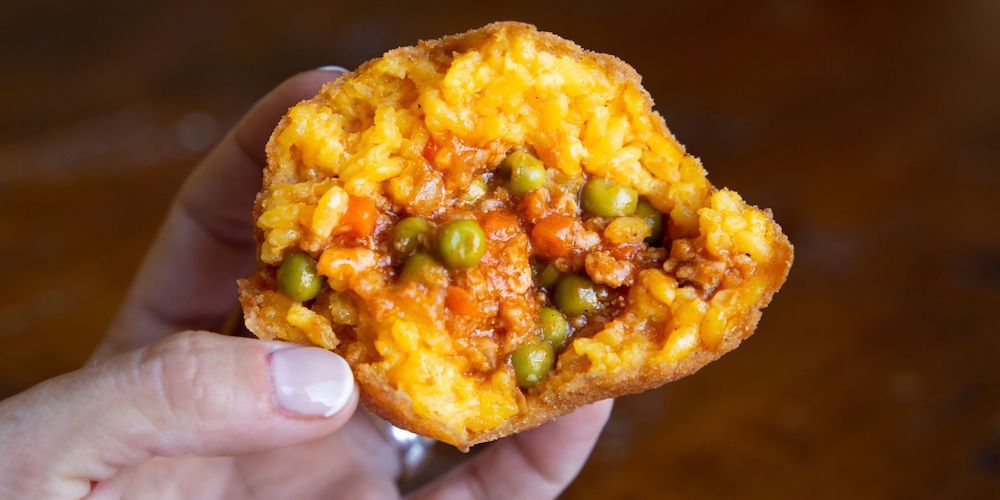
Sicily is a world in itself, a universe rich in traditions, history, landscapes that seem to reach us from another time. Art, monuments and nature are also reflected in the typical cuisine of a fairytale territory, a gastronomy that reflects the many cultures that have taken place within a truly magical and unforgettable region.
Where to start, then? Perhaps from Sicilian street food, with one of the most famous Italian recipes: Arancini. Wait… is the name correct, or should it be “ArancinE”?
The answer depends on where we ask the question. In Catania they use the masculine term, in Palermo the feminine one. This help us to understand how Sicilian recipes are really multi-faceted and sometimes different depending on where we are throughout the island.
Anyway, Arancino (or ArancinA) probably originated during the Arab domination. So we are talking about a product that has been present in this territory for over a thousand years! This simple and tasty food, made with saffron rice and various condiments (traditionally meat ragu), may have different denominations, but across Sicily it is typically eaten on the contrary, that is, upside down.
Let’s move on to another famous recipe of the Sicilian tradition, Pasta alla Norma. The name is a dedication to the work of the composer Vincenzo Bellini, and according to tradition it was the colleague and admirer Nino Martoglio to compliment this dish, calling it "a true Norma". It is a pasta seasoned with tomato sauce, fried eggplants (cut into cubes or slices), salted ricotta, basil and plenty of garlic to enhance all the flavors.
Also Caponata, a typical Sicilian side dish, uses as main ingredient fried eggplants, which are perfectly complementary to peppers, olives, capers, celery and tomatoes, for a tasty result with a traditional bittersweet taste.
Finally, after having tasted all these wonderful dishes, we must try to keep a little space for desserts: Cannolo Siciliano and Cassata are two excellences appreciated in Italy and all over the world. If Cassata is another food that comes from the Arab period, it is not easy to trace the origins of Cannolo. Looks like, according to tradition, that it was made the first time in a convent, by a nun who simply wanted to make a joke to her sisters!
1. Sardinia
Let’s conclude our itinerary to discover the most famous Italian recipes by taking a look at the fabulous landscapes and at the culinary culture of Sardinia.
Although it's often associated only with sea, resorts and holidays, Sardinia is a varied region with strong pastoral traditions. It is a land dominated by a wild and magnificent nature, with excellent gastronomic products, such as the renowned Pecorino Sardo, which result in ancient recipes, simple, strong and stunning tastes.
An example is Pane Carasau, which originates in Barbagia, a mountainous area in the heart of the Sardinian inland. It has a circular shape and its peculiarity is the thin and crunchy dough. It is a poor but very flavorful product, especially the variant called Pane Guttiau, that includes a seasoning with oil and salt.
Pane Carasau is also the basis for preparing Pane Frattau, a kind of lasagna whose sheets are wet with a lamb broth or, for a lighter flavor, vegetables.
In addition to bread and the resulting dishes, another typical recipe of Sardinia and famous throughout Italy is Porceddu, which is a Sardinian suckling pig cooked on a spit. It is a dish with a centuries-old tradition, in which the pig must be cleaned to perfection both inside and outside, before being stuffed into a skewer and cooked indirectly. In indirect cooking, the meat should be exposed to heat very carefully and not too closely. The cooking is very slow, and must be able to make the skin crispy keeping the inner meat soft and tender, thus creating a really delicious mix of textures and flavors.
About the author
Written on 08/06/2023

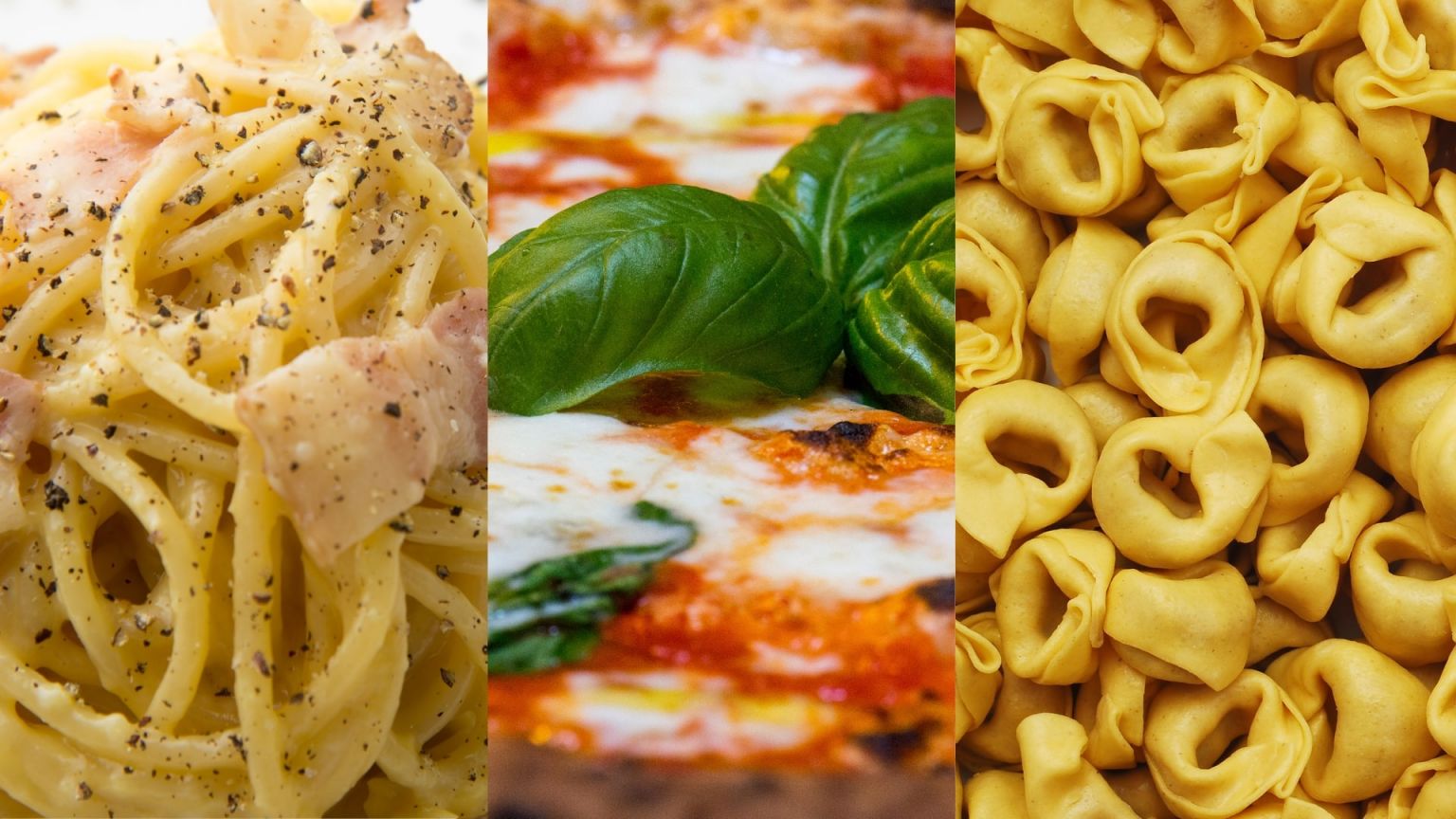

Alessandro Savino
Travel with us to discover the most famous Italian recipes, in an itinerary from North to South among the gastronomic traditions of our country.